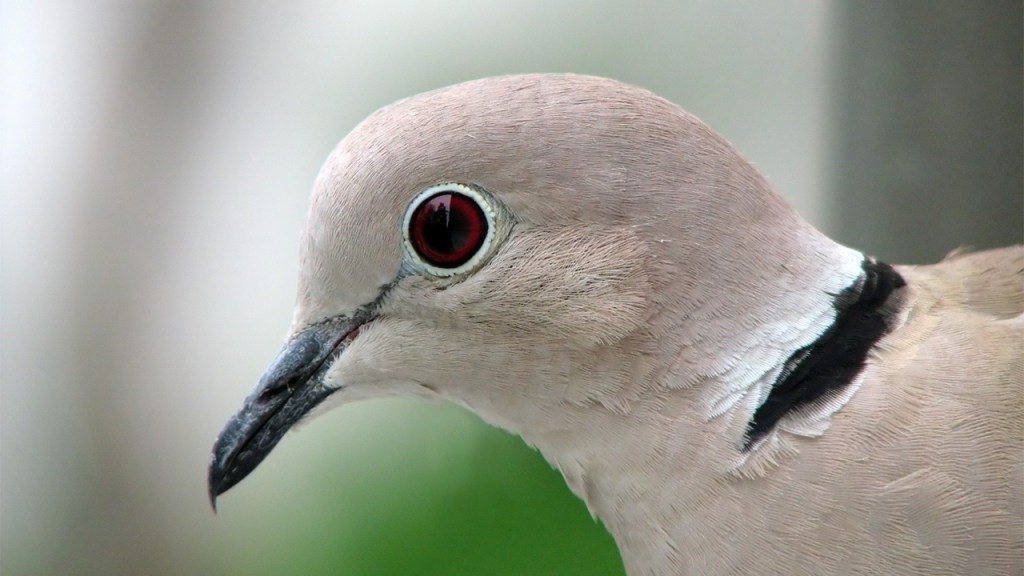The Great Backyard Bird Count (GBBC) — one of the largest citizen science initiatives in the world – annually documents a wide variety of bird population trends.
To my mind, one of the most interesting has been the dramatic spread of the non-native Eurasian collared dove across North America.
The GBBC asks citizen birders to watch an area for at least twenty minutes sometime during a four-day period in mid-February (this year’s count concluded yesterday), and record the birds they see.
Just ten years ago, seeing a Eurasian collared dove would have been a novelty. No more: the doves are now commonly reported by birders in most of the United States.
GBBC data tell the story of this rapid spread.
In the 1970s, the Eurasian collared dove was introduced to the Bahamas. By the early 1980s, the non-native birds made their way to South Florida, where they established populations. Then they began spreading north and west.
Their range appears to have expanded slowly at first. A look at GBBC reports from 1998 show a lot of sightings in Florida, with some birds reported in Texas, Alabama and Arkansas.
By 2001, the doves reached California.
Last year’s bird count results showed the Eurasian collared dove had colonized much of the country. It has not (yet) been reported in New England, but it has reached as far north as Alaska.
The GBBC’s video map dramatically illustrates this expansion.
In my state of Idaho, the doves were first recorded in 2005 by two backyard birders. In subsequent years, the bird was commonly reported in Idaho’s eastern corners. Last year, 132 GBBC participants reported 719 doves throughout the state.
I saw my first Eurasian collared dove in our backyard in 2008 – a banded bird that may have been an escaped pet. Last year, I began seeing the doves hanging around our neighborhood. This year was the first that I noted the species during my own participation in the Great Backyard Bird Count.
What’s going on here? Should conservationists be concerned about this spread?
Unlike some dove species, Eurasian collared doves aren’t migratory. However, they do readily expand into new suitable habitat. In fact, in their native Asia, Eurasian collared doves have been rapidly expanding their range as well – colonizing new countries every year.
The dove is one of those species that adapts well to humanity. The trees, power lines and bird feeders of suburbia provide perfect habitat. The Eurasian collared dove is almost always seen near homes and farms, not unbroken forest or prairie.
Research indicates it is not adversely affecting native mourning doves or other birds. It may simply be filling a new habitat niche created by suburban habitat. But it is still early in the spread.
Could Eurasian collared doves become an invasive threat? That remains to be seen.
Citizen science projects like the GBBC and another citizen initiative, Project FeederWatch, will help scientists continue to track the spread and impacts of the species. It will be interesting to learn what this year’s count found about Eurasian collared doves. If past years are any indication, their populations will likely have grown and spread into new areas of the country.
Have you seen Eurasian collared doves in your area? Have you noted other trends during your backyard bird counts? Let us know what you’re seeing!





I observed two Eurasian Collared Doves near my birdbath in Grass Valley CA today 3/17/24. Temperature was 67° and sunny. Haven’t ever seen them in this area prior to today.
Saw my first one today middle Tennessee. My son was shouting about a white dove with a collar and I thought he was making it up 😅
I just saw two Eurasian Collared dove preening in the Mesquite tree outside my window. I have never seen one before. We have dozens of white winged dove. I am about 80 miles north of Big Bend National Park in the far west Texas. 8 miles south of Alpine. Maybe they are common here, I was just excited because I have never noticed them before!
Just started seeing these beautiful doves in my backyard this weekend. I believe they may have been released at a neighborhood wedding. Very friendly, and landing in tree right next to our patio where 3 of us were sitting. Hoping this will be a common site.
I am seeing large grey doves with white rings around their necks. Might these be the Asian doves? Through my binoculars, I cannot see the black ring, but the white ring is very pronounced.
Saw a ring necked dove at my feeder in S Oregon this am 07 02 22.
W Eurasian collard doves. Sacramento metro airport. 6-21-2022. 8:13am.
I have a pair of Eurasia collared doves nesting under my patio cover. I also have mourning doves in my backyard and I have seen the two species sitting together on the fence. I hope the Eurasians stick around and have more broods because they seem very friendly. I’ve read they can be hand tamed.
Have seen this in the Texas Panhandle this Spring 2022. I have referred to this a the “NIKE DOVE”.
Seen in Fountain Hills AZ 3/27/2022. Beautiful bird.